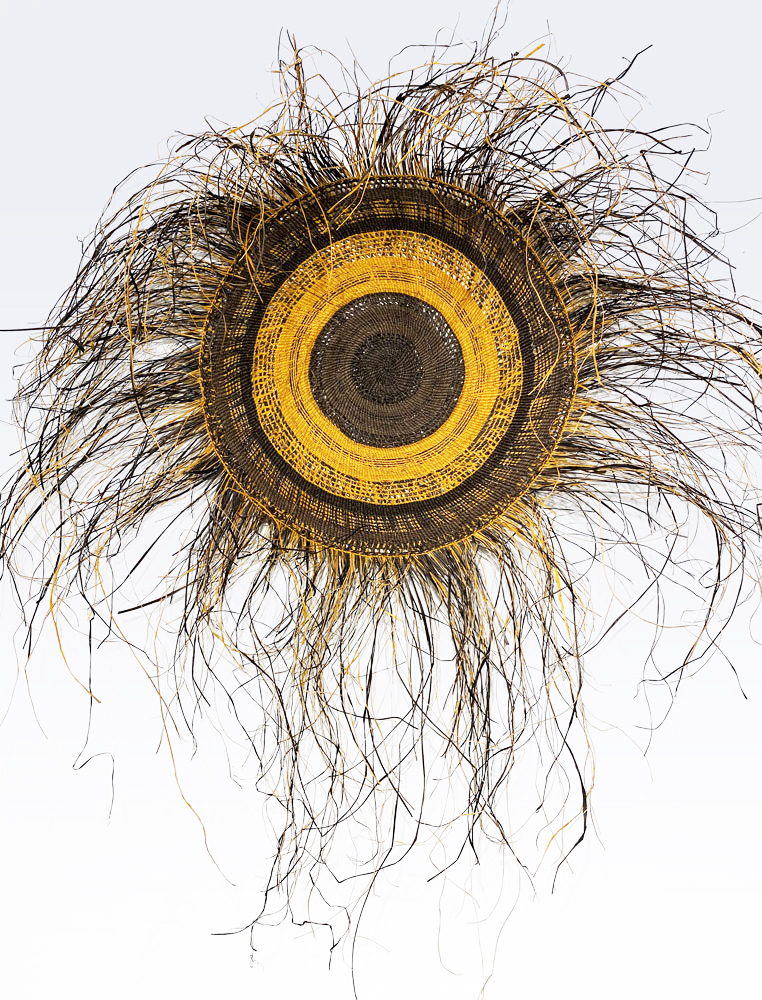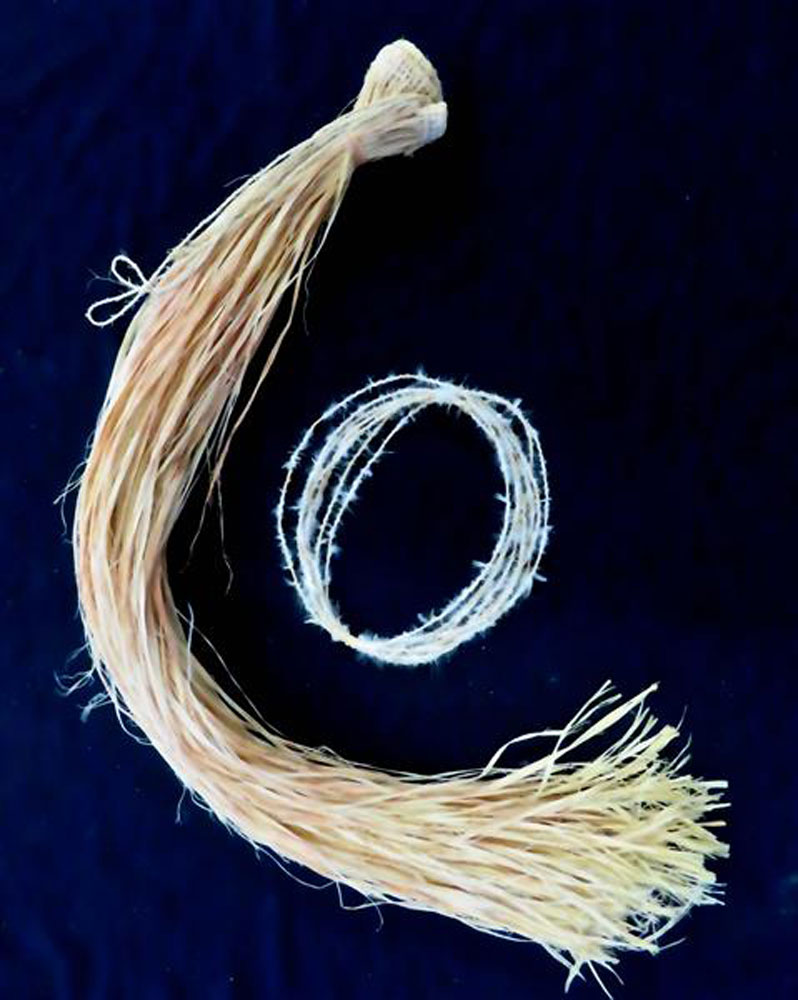4 – 21 March 2021
about the exhibition
Bula’bula Arts, located in Ramingining in North East Arnhem Land, is one of Australia’s most significant art centres and has a core objective to preserve and foster Yolngu culture. The women of Gurrwiliny, the Arafura wetlands in the surrounding area, use pandanus, sandbark and kurrajong fibres, spun and subtly coloured with natural dyes, to create exuberant and elegant pieces. The women’s fine techniques give rise to a variety of sculptural forms and textures which lay witness to the long and powerful cultural continuity in the region.
This exhibition includes pieces by Mary Dhapalany and Evonne Munuyngu, sisters from the artistic family which includes the actor David Gulpilil. The plant materials are harvested from surrounding areas, then worked, treated and woven using knowledge passed on from their ancestors. For most pieces, the body of the weaving is made from pandanus which has to be hand stripped to remove the spikes that line the outside of the leaves. Bush string is used for binding, decorating and basket handles and can be made from Sand Palm, Kurrajong bark and Banyan bark. The plant materials are coloured using natural dyes made from fruits, roots, leaves and barks. Vibrant yellow is created by boiling the roots of the Morinda tree whilst Bloodroot grass is boiled for varying lengths of time to create pinks, purples and deep red colouring. Once the material is treated, the artists then weave objects such as mats, fish traps, batjbarra (water chestnut scoops) and mindirr (dilly bags). Through the creation of these works the Yolngu women connect with their community, histories and country creating beautiful objects and teaching future generations. The artists at Bula’bula are represented in collections nationally and internationally.
Beaver Galleries would like to acknowledge the traditional owners of country throughout Australia and recognise their continuing connection to land, waters and culture. We pay our respects to their elders past, present and emerging. In particular we would like to acknowledge the Ngunnawal and Ngambri peoples, the traditional custodians of the land on which this exhibition is held.



































